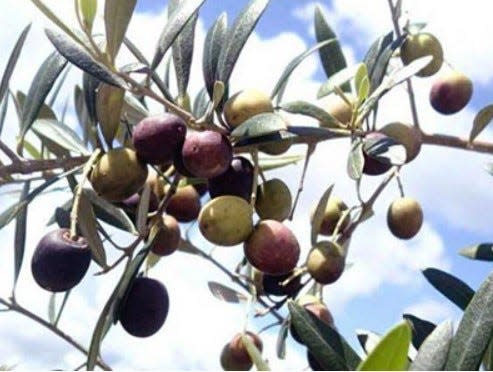Weekend Plantings: Olive trees for your Central Florida landscape
The first olive trees I saw in Florida were at Epcot, long ago. They were attractive and healthy, but I wondered how this Mediterranean species (Olea europaea) would fare long-term in the Sunshine State.
Seemingly, however, they grow well here, though Central Florida may be their southern limit. Cold hardy to temperatures in the low teens, olive trees thrive on poor, sandy sites in sun and should be fertilized lightly. These handsome trees, which grow rapidly, flaunt white blossoms in mid-spring. They’re followed by green fruit that mature to a black or coppery color – or stay green depending on variety.

Speaking of variety, the most popular kinds for Florida are Arbequina and mission. Both are self-pollinating, though more fruit is produced if other varieties are nearby. Be cautious when purchasing olive trees: Arbequina grows 15 to 20 feet tall, while Mission can grow more than twice as large. Young plants – grafted or grown from cuttings – begin to flower and fruit when 3 to 4 years old. Regardless of age and type, olive trees are appealing in the landscape due to foliage that’s dark green above and silvery below. Trunks and limbs feature corky, light-colored spots called lenticils, which are sometimes mistaken for pests or diseases by novice gardeners. Incidentally, fresh olives are unpalatable due to alkaloids and must be processed before eating. Plants and information about processing the fruit are available online.
Hold your nose for asafetida
Known as the world’s most vile-smelling spice, asafetida – aka devil’s dung – is produced by drying a latex-like exudate from the roots of an herb (Ferula assa-foetida).
Native to Iran, India and Pakistan, the species’ roots are coveted for their reputed ability to aid digestion when cooked. The raw extract, however, is said to smell like a blend of onions and sulfur, and was once used by Norwegian sailors to ward off sea serpents.
The best time for chores
Wrestling with bags of composted manure and pine bark mulch is never pleasant, but late autumn is as good as it gets: It’s cooler and less humid, and biting insects aren’t as abundant.
Fall weather is also conducive to painting, staining and cleaning outdoor furniture and decks in relative comfort. In addition, it’s a fine time to prepare beds for a spring garden and for installing hardy shrubs and trees – but only if you’ll be able to irrigate them regularly.
Cool-season pruning
When and how to prune different species of plants takes thought and knowledge, but most common hedge plants can be pruned – even hard pruned – any time of year, including now. Among them are ligustrum, dwarf schefflera, Japanese boxwood, lorpetalum, eleagnus and viburnum plants.
On the other hand, particularly if you’re a bird lover, you might not want to prune your Indian hawthorns if they’re still displaying fruit. Regarding azaleas, they obviously shouldn’t receive a general pruning, but don’t be afraid to cut back the occasional skyrocketing stems that appear.
This article originally appeared on The Ledger: Plantings: Turns out olive trees grow well in Central Florida
